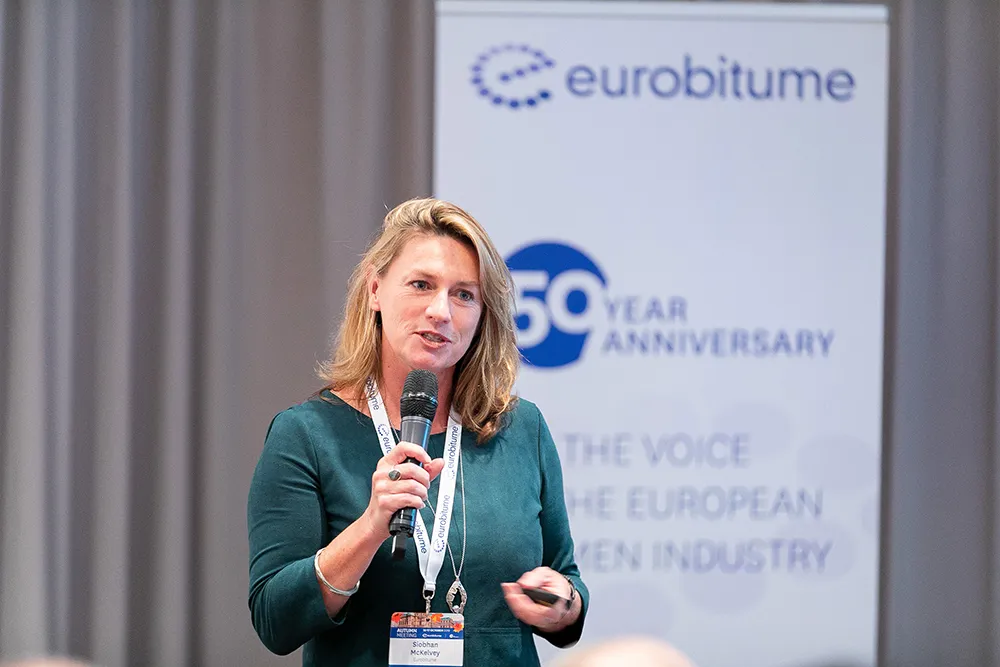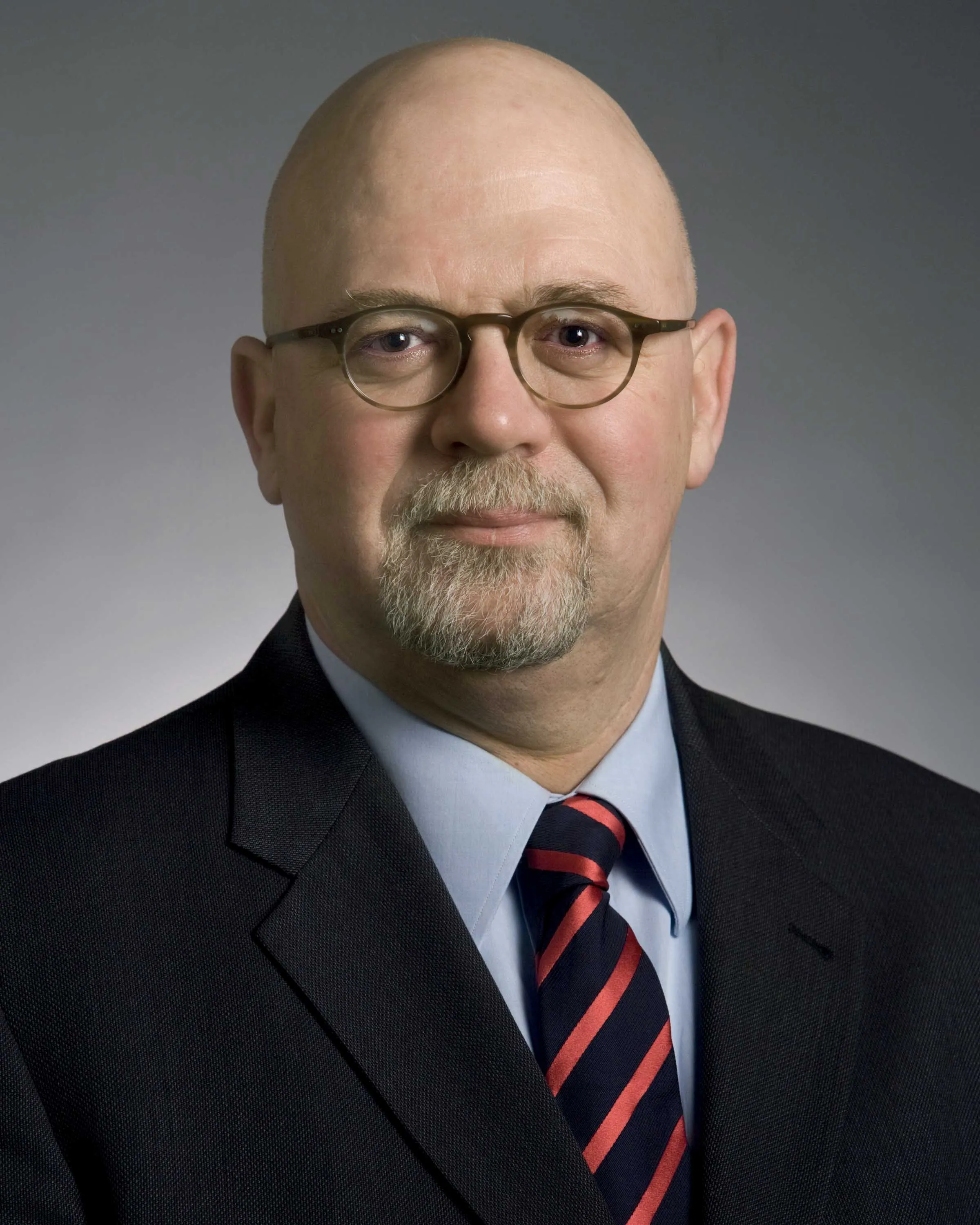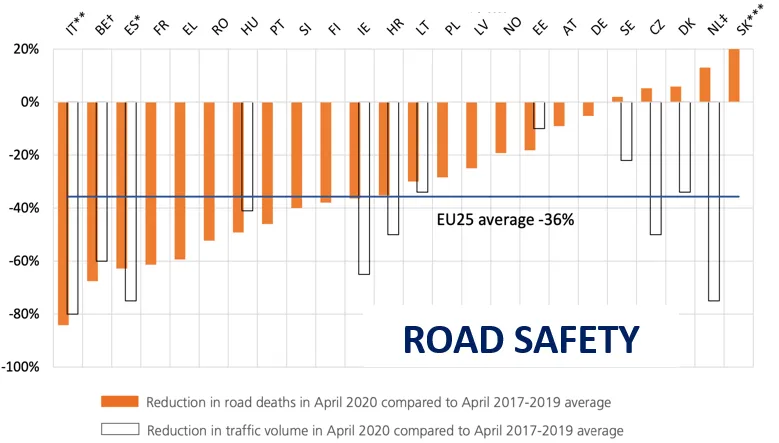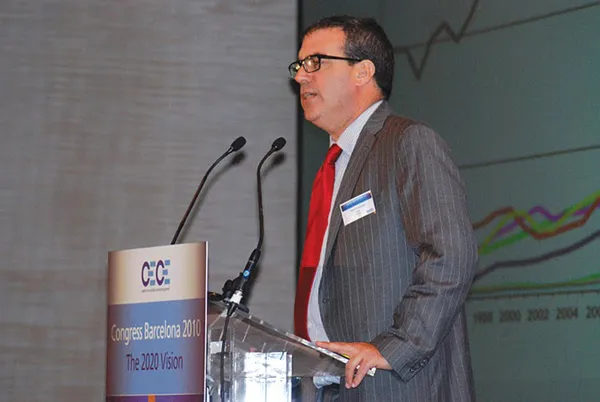
Is the bitumen industry the perpetual Cinderella as it watches the other smart mobility sectors head off to the ball? Everybody expects the bitumen businesses to be there but not make a noise. Just get that asphalt laid down so those who know everything about smart mobility can get to the mobility party on time. Well, Cinderella has now found her shoe and she is headed to the ball herself.
Part of the smart mobility ethos is being green – lower carbon footprint, using less to accomplish more, reducing the impact on the environment. The bitumen sector, including the asphalt production and paving industry, is doing this already, says Siobhan McKelvey, director general of Eurobitume – European Association of Bitumen Producers, based in Brussels. Many companies and organisations are well down the road of sustainable production, use and – importantly – reuse of bitumen products and services.
But the sector hasn’t been as good as it should have been for getting the message out that it is part of the solution and not the problem when it comes to future mobility, she explains. Now, on the eve of the 7th Eurasphalt & Eurobitume Congress it is time that the bitumen sector had a seat at the mobility table and the E&E Congress aims to demonstrate this.
The event, organised jointly by Eurobitume and the European Asphalt Pavement Association (EAPA), will be in Madrid from 12-14 May. The overall theme for the 2020 Congress is Asphalt 4.0 for Future Mobility (see box), says McKelvey, who has 30 years in the sector and was president of Eurobitume from 2015-18. After a brief hiatus, last year she was seconded from her employer Nynas to Eurobitume as director general, a full-time three-year appointment.
Bitumen is really about connectivity and mobility, which takes in social and lifestyle issues. “But the external image of the sector has been one of dirty hands driven by a “just-fill-the-potholes” attitude, says McKelvey. “We believe we are a green industry, committed to improving the environment. Young graduates now are actually looking to work for companies that have good environmental credentials, with which they can feel comfortable. There might be an image that we need to correct.”
Image issues
Correcting this image is the theme of the congress. “It’s very much about the revolution of being more digitised, the exchange of data to make decisions, transport and infrastructure. Everybody talks about smart roads; well, we believe we already have smart asphalt and smart bitumen. We need to make this clear, define what this is and explain the link to future mobility which is key for the future. Roads will still be there, so we’ll have a big role.”
Bitumen itself has been around here for more than 100 years and yet is one of the most adaptable products and still used for transportation. “In terms of construction, I’m not sure we know of any other product that can be as reused - as well as recycled - into as many other products. The first priority within the European Union is to reuse. As an example, we have had discussions with the plastics industry and they, too, say the focus is for reuse and if not, then recycling into secondary material and other products and applications.”
McKelvey believes that the reuse and recycling challenge, as well as making asphalt more durable, is what makes the bitumen sector attractive for engineering graduates. The interface of tyre and road surface is part of the environmental challenge. “If you have better maintained roads, you lower the energy needed by a vehicle and so will reduce vehicle carbon emissions, not to mention lower road noise. We know we can demonstrate this,” she says. “We’ve just kicked off an internal review of how we can position ourselves in the sustainability agenda. We have good data and will pull it all together and write the story.”
The work will be about “decoupling bitumen from being a fossil fuel” in the minds of many people, inside and outside the sector, she explains. “Bitumen comes from crude oil, so people immediately think that it’s a fossil fuel. But it’s a reusable part of the fossil fuel story. It is an engineering and construction product and not a lump of fuel that you burn once and its gone forever.”
Future leaders
The trick for the sector, and Eurobitume’s members in particular, is that they may be talking amongst themselves rather than getting the message out to a wider mobility-oriented audience. McKelvey is aware of this.
“At the E&E Congresses we do try to attract people outside the bitumen industry, but this is not always that easy. Our sector can be fairly technical in nature. But on the Thursday of the conference [last day] there will be a special Future Leaders Workshop, a less technical look at the industry from a higher management responsibility level,” she says.
“At conferences, most often you see senior and middle managers attending. This is why we’re incentivising our members to nominate people within their organisations who are not currently in a senior management role to receive a discount to attend the Future Leaders Workshop. We will need people at the workshop who can tell us what their expectations are for the sector and themselves. If they have a good feeling about the Congress, then this will be spread about.”
McKelvey cautions that the workshop is not simply for young people; it won’t be a “young professionals workshop”, she says. “Attendees should have diverse backgrounds and experiences, not be just young and working in a junior capacity for a bitumen producer or similar company. We need to understand what the expectations are of people of all ages and who are looking at the sector as a career.”
The goal is to capture potential leaders that can move the sector forward given the changing societal demands. “The skills needed for leadership in the sector will undoubtedly change from being not just engineering but computer and digitisation degrees to mobility knowledge and environmental backgrounds,” she says.
As director general of Eurobitume – she calls herself a “caretaker” for her members’ needs - what might keep McKelvey up at night?
“Making sure that we are making the most of our opportunities,” she says. “We believe we are green, but perhaps get some bad press. Overall, we agree that education about what we do and also internally among our members, whether it technical education or communications, will play a much bigger role in the near future.”
The 7th Eurasphalt & Eurobitume Congress in Madrid in May will play a role in this strategy. “The theme Asphalt 4.0 Future Mobility is to show that we don’t have all the answers, but we have some.” The question will be, she says, who should the sector’s players be partnering with to help get the Bitumen sector a seat at the Future Mobility table.
Asphalt conference

The 7th Eurasphalt & Eurobitume Congress is organised jointly by the European Asphalt Pavement Association (EAPA) and Eurobitume. The overall theme for the 2020 E&E Congress is Asphalt 4.0 for Future Mobility.
If previous EE Congress events are anything to go by, the 2020 edition in Madrid could attract up to 1,000 participants. Attendees will have responsibilities for all manner of subject areas and come from road authorities, airport administrations, contractors, politics, infrastructure and design engineering firms, bitumen and asphalt producers, highway concessionaires, social scientists, road users, equipment manufacturers, research institutes and road financing groups.
Asphalt, bitumen and other related industries need to be ready for these future requirements – undoubtedly asphalt roads and the services they provide will remain of high importance in the future for all types of end users from cyclists, motorcycles, cars, buses and heavy goods vehicles - regardless of the way they move forward. The focus however, will be to create smart roads and, therefore, smart asphalt.
• More information is available on the E&E Congress website: www.eecongress2020.org









